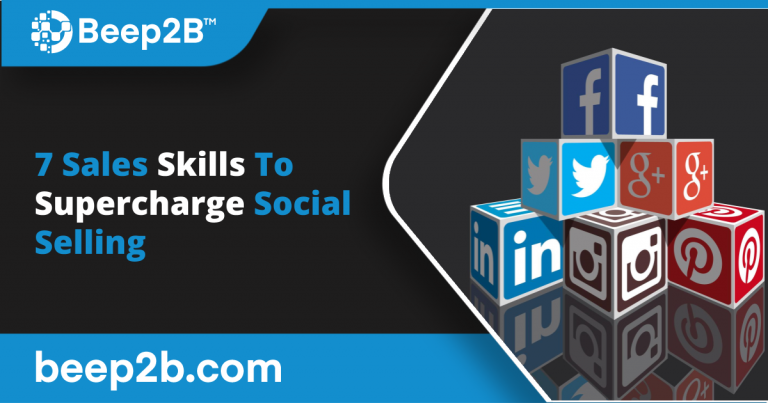Ready to nitro-boost your social selling skills?
Today is the day!
We have 7 powerful strategies that you can use to supercharge your social selling. Shared by Founder and Sales Coach at the London School of Sales, Vinit Shah, these skills will make a world of difference in your social selling strategy.
The modern social selling strategy follows the traditional sales funnel of awareness, lead, interest, and sale. All of the tips we’ll share today transcend industry and sector, working for all kinds of businesses.

Read on to find out how to boost your sales skills
1. Understand Personality Styles
When someone engages with your content, how much effort do you put into trying to understand what personality type they are? If you’re able to understand their personality type, you can communicate in a way that pushes the sale quicker.
It can be hard to understand personality types before meeting someone, but this should be your first goal once you get someone on a call. You must then adjust your style so that you are giving them information in the best way for them to consume. This is beyond mirroring, it’s a deeper level of understanding and communication. Imagine that you target seniors of organizations, high-up people. Chances are, most CEOs are “drivers”, people who like to be communicated with directly. They want a direct, simple answer.
If you are working with an analytical personality type, they want the detail and will be comfortable with a display of detail. Amiable individuals are “people’s people” and you will need to bring them into the conversation. Lastly, you have expressers. They are eccentric, often entrepreneurs that are out there. Get them to talk about themselves and get them excited.
2. Build an Effective Questioning Strategy
Asking the right question at the right time in the sales cycle is crucial. Your questioning phase begins on social media, you are posting content to try to attract your target audience. You are asking wide-open questions to get them in the funnel, once in the awareness phase the questions are still open but a little more specific to your product, like “why did you choose this specific strategy?” In the middle of the funnel, ask probing questions. These are specific pain points your product solves. Further down, you ask closed-choice questions. At the end of the process, it’s closed questions “yes or no”, like “would you like the contract to start this month or next month?”
Your ability to listen is part of this strategy. Proper questioning speeds up the sales cycle and facilitates natural conversations as long as you are also willing to listen.
3. Use Stories to Paint a Picture
Keep stories simple and jargon-free. Focus on how you can help them solve their problem. Far too many sales focus on features. They explain what their product can do, but your customer won’t really care. They are interested in if you can help them solve their problem. Design your stories around that. The easiest way to look at that is the problem → your service → outcome. Quantify the outcome in percentage, time, or savings, whichever relevant metric shows the value you can provide.
If you have multiple products and facets to each, then think of a story for each one. Consider the people you’ve helped in the past and what resonates with your customer base. On social media, people are interested in people and stories are inherently social. An easy way to do this is to add “so that you can” to your feature, this instantly transforms your information into benefits for your audience.
4. Handle Objections
Objections are not negative! Sometimes, you won’t be able to overcome it, but 90% of the time you can. Even raising an objection demonstrates that the customer is thinking about your product or service. Objections are opportunities to explain how you have helped others with the same issue. It’s also a chance to collect feedback to improve your product or service. It’s an opportunity to tweak your pitch, or to ask more questions.
Turn objections into a positive, you must just create better alternatives using the new information from objections.
5. Create and Maintain Urgency
Time-sensitive offers are a trivial way to create urgency. To create real urgency, you must have something effective to help your audience. You create urgency via your social campaigns. Think of it as a series of milestones starting with an engagement meeting. You then have a follow-up, and this creates a little bit of urgency. If you ask them to supply a little bit of information at the meeting, it furthers the urgency.
As you move down the sales cycle, the more milestones you have that engage the customer, the more urgency you create. This way, the close is just one step away.
6. Negotiation
Don’t negotiate with yourself. Don’t quote a price and then think maybe it’s too expensive. You do not want to regret the sale. The most important thing is to get something in return for a discount. Create tradeables that you can offer. The tradeables are valuable to you, but it’s something your customer can give you.
For example, say the customer wants a 10% discount. What can you get for that 10%? Maybe a referral, testimonial, etc. The crucial part of negotiating is to get something in return. It’s easy to cave in when someone is bargaining hard, but it should be a two-way process.
7. The Close
The close can happen at different stages in the sales process, but formally asking for the business is a crucial step. Many people struggle to do this. They do all the hard work to engage with people, but then never officially ask for business. Don’t be afraid to ask for what you want. You must have this in your strategy.
The Bottom Line
Social selling is still selling. You must develop the essential sales skills. A proper sales process is not painful or scammy. Instead, it’s about truly understanding the value you can deliver to people and showcasing how you can help them solve their problems.
The 7 tips above are interconnected in important ways. The bottom line is that you must understand your audience. You should know the best way to react to their personality, and when to ask which questions along the sales funnel. See objections as opportunities to learn, teach, and improve. Negotiate in a way that also gets you a fair tradeable in return.
Using these 7 strategies, you can elevate your social selling strategy and reach more customers. You’ll find more success and be able to close more sales (just make sure you formally ask for the business!).
For more advice on social selling, book your strategy session with Beep2B HERE.


